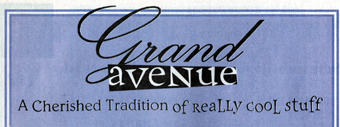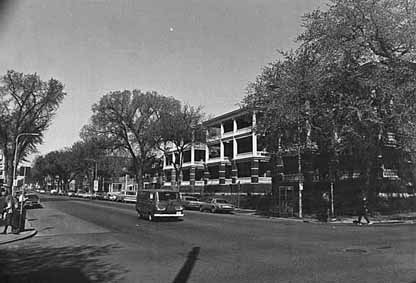Grand Avenue
From Irvine Park west to the St. Paul Seminary, St. Paul
| Grand Avenue ad from Lavender Magazine, 1997. Courtesy of the Jean-Nickolaus Tretter Collection. |
St. Paul’s choice address for the young and hip, Grand Avenue is home to over three miles of apartment buildings, high-end shops, and subdivided single-family homes. The street lies one block south of the city’s mansion row—Summit Avenue, which is “the best preserved American example of the Victorian monumental residential boulevard.” |
F. Scott Fitzgerald dubbed Summit “a mausoleum of American architectural monstrosities;” the homes reflect the gaudy days of St. Paul’s lumber barons and railroad tycoons.Dwellers of Summit’s mansions (or their servants) used Grand Avenue for their everyday commercial needs for many years. Students from Macalester College, the University of St. Thomas, and Concordia University also support businesses on the historic street.
| These mansions and grand apartment buildings proved too expensive to upkeep and rehabilitate in the 1950s and 60s, when suburban neighborhoods with postwar appliances and freeway access were al the rage. Queer people settled along Summit and Grand after the streets faded.
|
Grand Avenue during its "Castro Street" period, 1976. Image courtesy of the Minnesota Historical Society |
Grand’s apartment buildings and commercial structures were affordable and (relatively) safe options for queer business and social services. Thus, bars like the Noble Roman opened near the home of Women’s Advocates and remained throughout the late 60s and early 1970s. Gay businesspeople restarted Grand Old Days—a forgotten 19th-century festival—in 1973.
The fledgling gay district suffered a fatal blow in 1978, when a voter-referendum—initiated by the infamous Anita Bryant—overturned a municipal gay rights clause 3-to-1. A majority of the area’s disenchanted population migrated to southwest Minneapolis, and gentrification ushered heterosexual families and young professionals in to replace them.
This page is still under construction. -SVC
Part of Minneapolis/St. Paul, MN: 100 Queer Places in Minnesota History, (1860-1969), (1969-2010)

